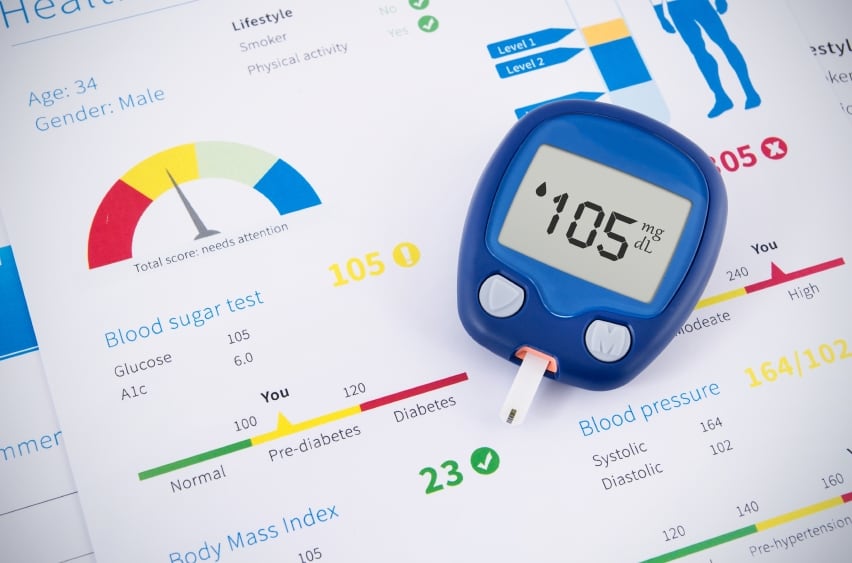Blue maize extracts administrated to groups fed either high-sucrose diets or high-sucrose and high-cholesterol–high-sucrose regimens were found to enhance high-density lipoprotein cholesterol and decrease systolic blood pressure levels.
In addition, those subjects on these diets that received the blue maize extract did not gain as much weight as those who did not receive the extract.
The findings add further evidence of using blue maize as a novel source of natural antioxidants that could prove useful in the development of functional food products or nutraceuticals.

Previous reports on animal models suggested a potential application of pigmented maize rich in anthocyanins for prevention of obesity and diabetes.
Here, researchers from the University of Veracruz in México, detailed procedures designed to assess total polyphenols, anthocyanins, and antioxidant activity in blue maize.
Metabolic Syndrome (MS) was induced in rats fed a high-sucrose (HS) diet for 12 weeks. As expected, changes to systolic blood pressure, serum triglycerides, and decreased high-density lipoprotein cholesterol from this diet were observed.
The control group (C) received a chow standard diet consisting of raw protein (minimum) 18.0%, raw fat (minimum) 5.0%, raw fibre (maximum) 5.0%, and water;
The experimental group (HS) also received the chow diet plus 30% sucrose in drinking water during a period of 12 weeks.
This HS group was then further divided into four groups receiving one of the following diets for an additional 4 weeks: A standard diet plus 30% sucrose (HS) in drinking water; high-sucrose and extract (HS+E) received a high-sucrose diet plus 2 millilitres (ml) of blue maize extract; high-sucrose and cholesterol (HS+C) received high-sucrose diet plus 1 gram (g) of cholesterol; and high-sucrose and cholesterol plus extract (HS+C+E) that received high-sucrose diet plus 1 g of cholesterol and 2 ml of extract. The last of the groups was the control group (C), which received a standard diet and drinking water without sucrose.
Levels of total polyphenols and anthocyanins were 9.97 and 2.92 milligrams per kilogram (mg/kg) of weight, respectively.
Blue maize facts to a-maize
In blue maize (Zea mays L.), the colour is due to anthocyanins and polyphenolic compounds of low molecular weight that belong to a type of flavonoid.
Blue maize anthocyanins have been found to possess certain biological properties that protect against cardiovascular disease and diabetes.
Along the same line, previous studies in animal models suggest that anthocyanins prevent obesity, dyslipidemia, inflammation of visceral fat, and high blood pressure.
Study findings
Findings revealed that a significant increase was found in abdominal fat weight in the HS + C group compared with the other groups, including control rats.
Rats that received the extract (HS + E and HS+C+E) showed significantly lower epididymal fat weight than control, HS, and HS + C groups.
Significantly lower values in systolic blood pressure were observed in rats that received maize extract (HS + E and HS+C+E) when compared with the HS group (31% and 32%, respectively), but similar to those found in the control group.
Triglyceride levels were lower in the HS + E group by 32% compared with HS group, but similar to those found in the control group.
The maize extract seemed to affect cholesterol levels as lower values were recorded in the HS + E group (22.7%) compared with HS and control groups.
When blue maize extract was added to diets (HS + E and HS+C+E), a significant increase in HDL-C concentration was observed when compared with HS rats (20% and 30%).
“In the current investigation, a diet high in sucrose and cholesterol produced a greater content of abdominal fat in comparison with the group given only sucrose and the control group.
“However, it was markedly reduced after administration of blue maize extract.”
Anthocyanin actions
Many studies have shown that anthocyanins possess properties that impact the reduction of lipid levels.
For example, the supplementation of anthocyanins of purple maize to rats with a diet high in fat suppressed enzyme mRNA levels involved in the synthesis of triglycerides.
Similar results have been reported in black soy extracts administered in rats with a high-fat diet, which reduced triglycerides and total cholesterol and favoured the increase of high-density lipoproteins.
In further analysing the results, the team were unable to identify a specific antihypertensive mechanism blue maize extract exerted on arterial hypertension,
“It could be due to the vasoprotective effect of anthocyanins since they confer relaxing activity in isolated rings of the aorta,” the study concluded.
“This is an effect compatible with the relaxing vascular effect that several antihypertensive compounds provoke.”
Source: Journal of Medicinal Food
Published online ahead of print: doi:10.1089/jmf.2016.0087
“Blue Maize Extract Improves Blood Pressure, Lipid Profiles, and Adipose Tissue in High-Sucrose Diet-Induced Metabolic Syndrome in Rats.”
Authors: Rosa Isela Guzman-Geronimoa et al.
